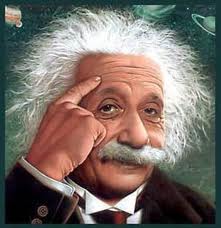Synopsis
By Licda. Guiselle Weelkly
Chapter 6
"Assessing Speaking"
Many teachers prefer to use a more general rubric for speaking tasks such as the ones listed above.
"Assessing Speaking"
Speaking is as we know is an important mean of communication in actually all English programs.
According to the teacher, the curricular program and other aspects, valid assessment should reflect the course objectives.
Some ways teacher uses to test this skill are:
- Simulation of real-life situations in which students are engage in conversations.
- Develop class discussions and debates.
According to Heaton ( 1995, p.88) the skill of speaking is " an extremely difficult skill to test..." The greatest challenges are resource requirements and reliability, including the perceived subjectivity in grading.
Teachers most of the time after analizing:
- Lack of time.
- Number of students.
- Lack of available tests.
- Administrative difficulties.
It is important dispate the different situations this assessment might go through, to do the correct evaluation because, for instance, in communicative language teaching, speaking is a prominent component of the language curriculum, and on the other side, English is consider a global language, it is said that a large percentage of the world's language learners study English in order to develop proficiency in speaking.
According to Canale and Swain ( 1980) there are four competencies underlying speaking ability and they are:
- Grammatical Competence.
- Discourse Competence.
- Sociolinguistic Competence.
- Strategic Competence.
There are some categories of oral skills worthy of looking at, they are:
- Routine Skills ( exchanging information or interacting)
- Improvisational Skills.
Some special issues in speaking assessment can be:
- Develop assessments that test more than one student at a time, giving each student the opportunity to speak individually.
- Test formally only few times during a course but use continuos assessment of students during normal classroom activities.
- Formal Speaking Assessment Techniques which carries a framework for speaking tests following these stages:
- Warm up.
- Level Check.
- Probe.
- Wind down .
- Picture Cue.
- Prepared Monologue.
- Role play.
- Information gap activity.
Classroom Speaking Assessment Techniques, they include:
- Oral presentations.
- Debate on a controversial topic.
- Reading aloud.
- Retelling stories.
- Verbal Essays.
- Extemporaneous Speaking.
General Rubric for Assessing Speaking
Many teachers prefer to use a more general rubric for speaking tasks such as the ones listed above.
Adminsitrative Issues for Assessing Speaking
There are a number of issues that definately take place when assessing students, whether individually or as a group, therefore, it is recommended to follow this tip:
Select two or three students each class period and focus on their speaking during class participation. According to Coombe( 2007) if you do this regularly, you will be able to track students' progress throughout the course in a fairly stress-free environment.



















